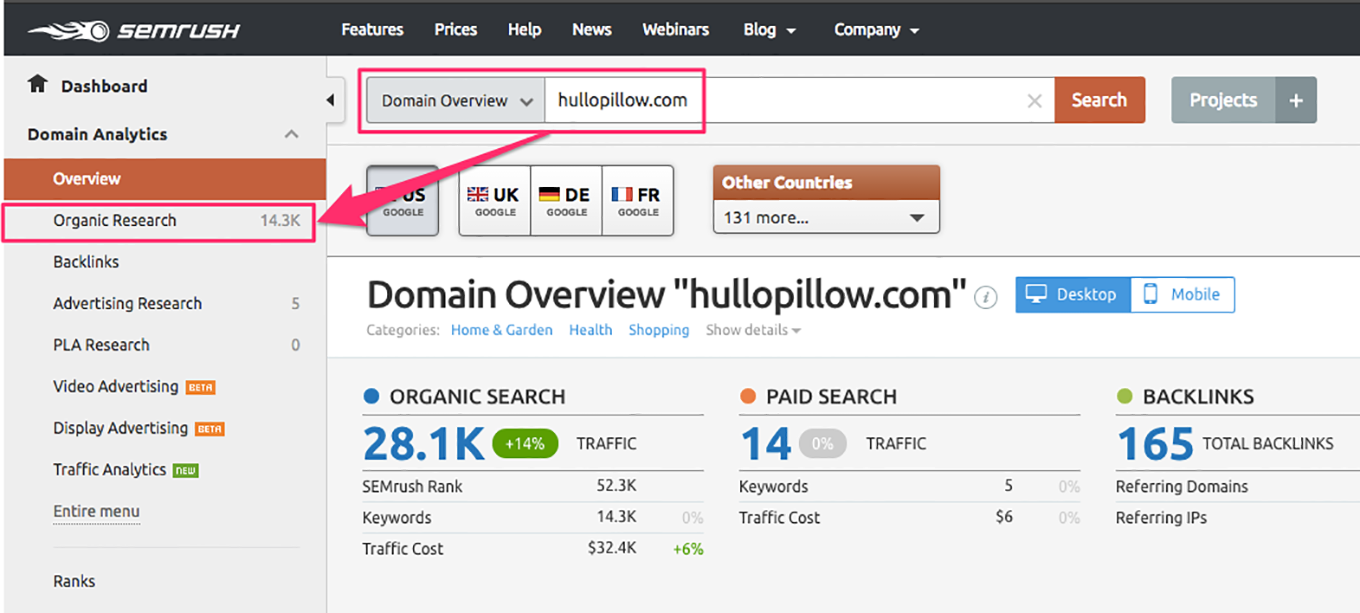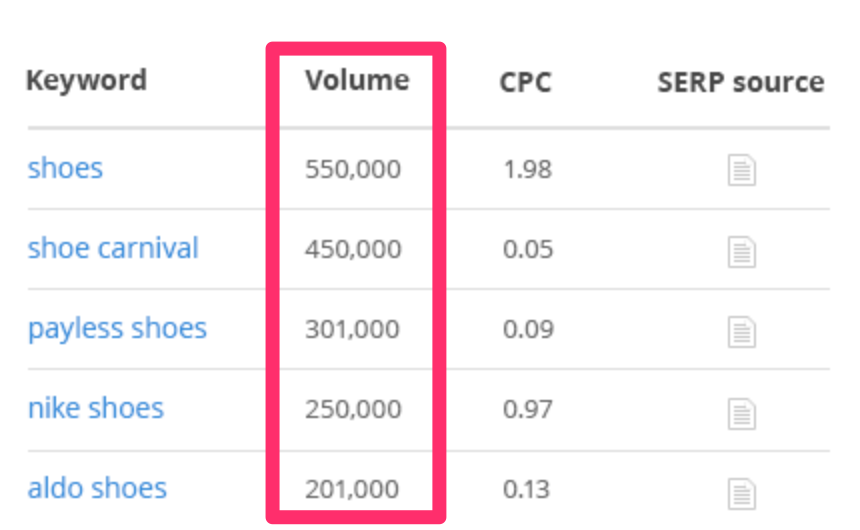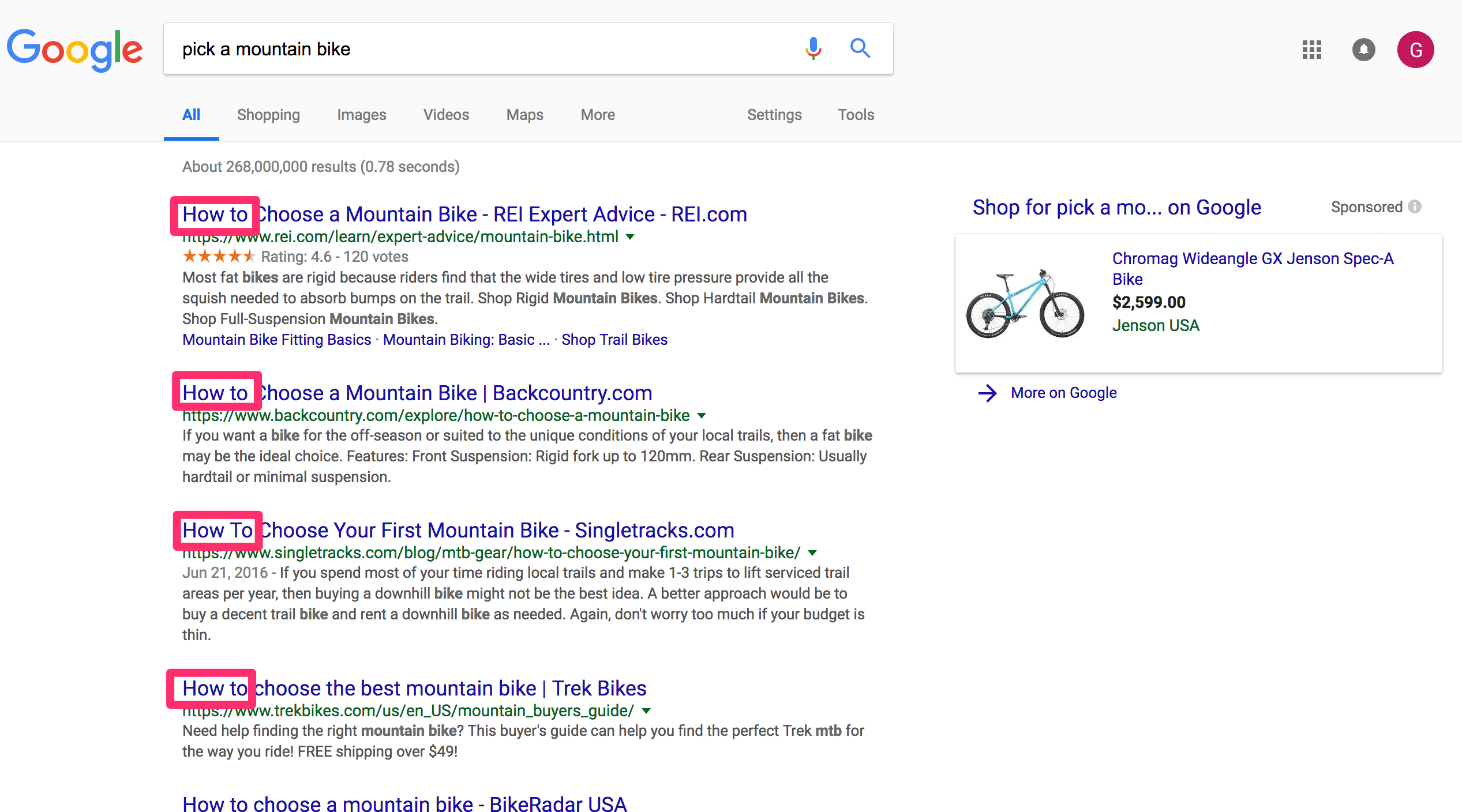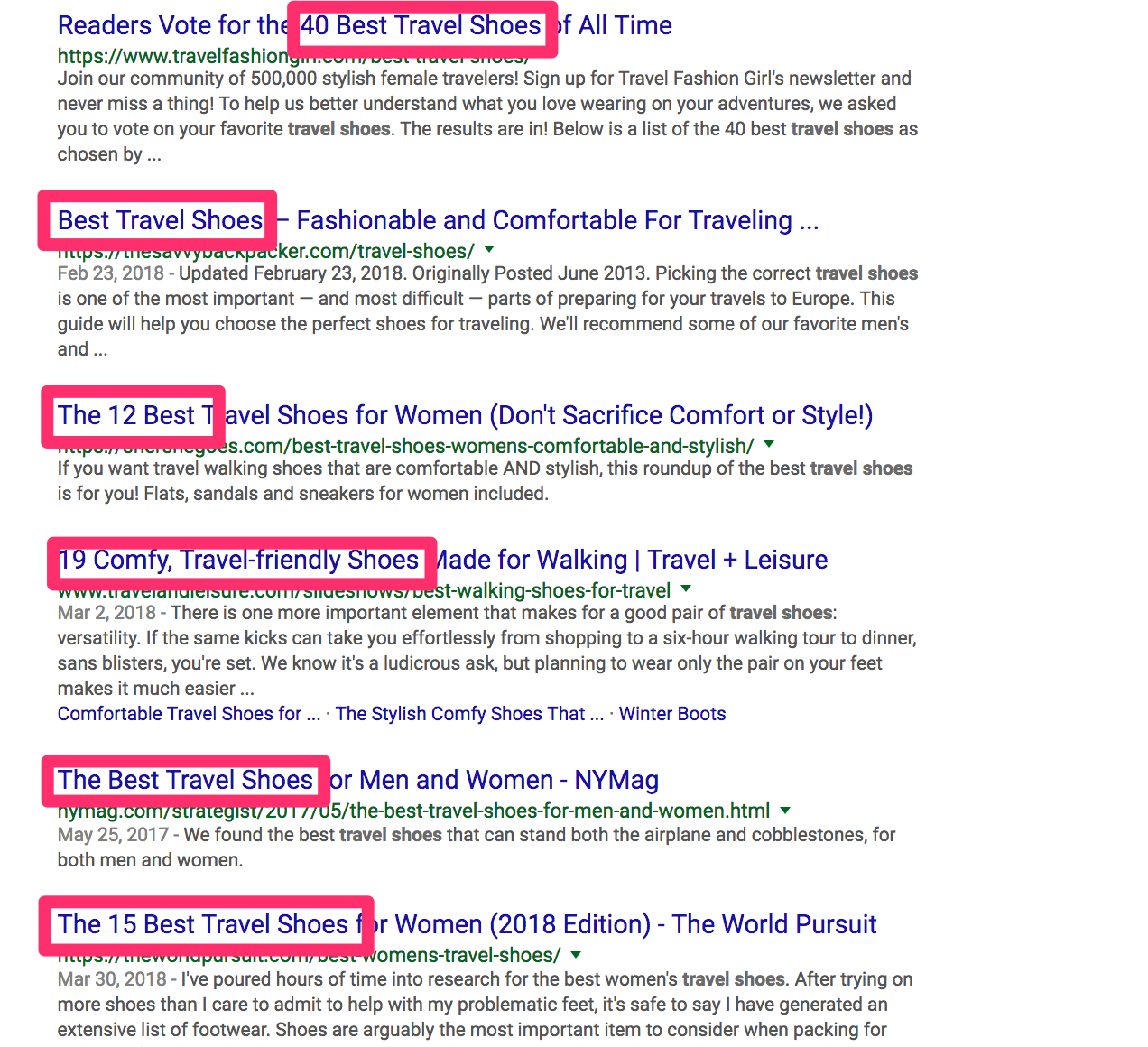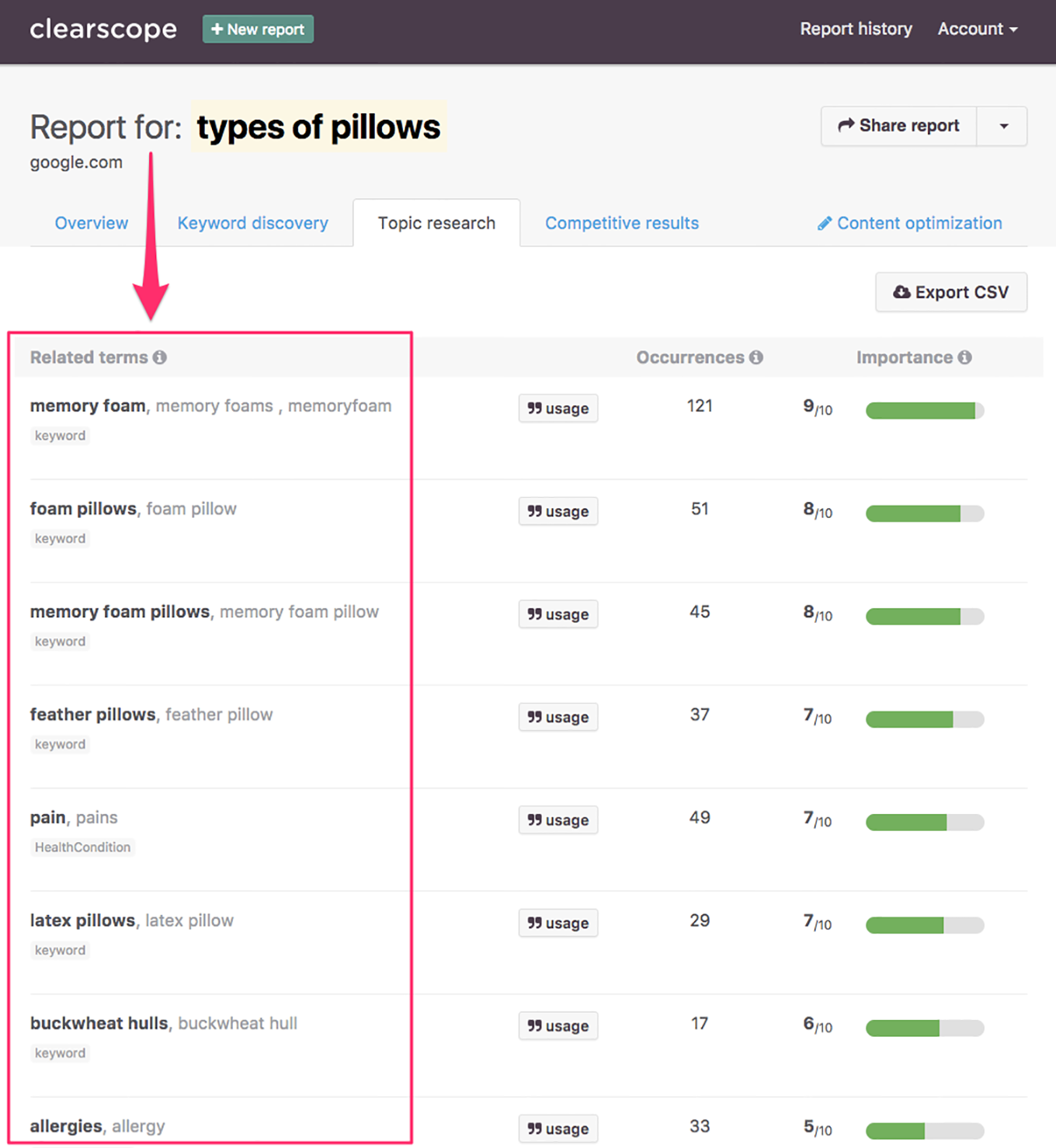This is a guest post from Matt Sornson, head of growth marketing at Clearbit.
For ecommerce sellers, content is a way to build relationships with potential customers. Online merchants can’t shake the hands of leads and win them over in-person. Content is an alternative way to nurture those leads and draw them into the sales funnel.
The outdoor retailer REI features a helpful mountain bike explainer post.
[Source]
For leads at the top of the funnel, content marketing is a powerful way to meet as many potential customers as possible. To gain this much traffic, TOFU content should be backed by a solid SEO strategy. With search engine optimization, you’re able to reach a larger number of leads and, in turn, have a greater chance of winning customers.
Let’s dive in.
How TOFU Content Is Different
For customers towards the bottom of the sales funnel, content is geared towards making a sale. The further down the funnel customers are, the more excited they are about your brand. Content about your products can push these loyal customers to make a purchase.
But at the top of the sales funnel, content is only meant to generate interest and awareness around your brand from people who aren’t familiar with your products. The more attention and traffic the TOFU content creates, the better it is for your business.
The Purpose of TOFU content
Every brand-new ecommerce lead isn’t going to become a customer. Knowing this, you want to attract as many people in the beginning with your TOFU content to maximize the number of future customers.
To generate this much attention, TOFU content should be broad in focus rather than a targeted sales pitch. A brand-new lead isn’t ready to hear about the nitty-gritty details of your product experience. Hearing a pitch about your product specs or store promotion means nothing because they haven’t formed trust in your brand yet.
The shaving company Harry’s features a relatable, sweet family story on their blog.
[Source]
When your TOFU content is general and resonates with most people, you set yourself up for greater sales in the future. Content with a broad scope provides value to a greater number of leads than if it had been more narrowly focused on your product. Enjoying your content, these leads are forming trust in your brand and moving further down your funnel to becoming customers.
Types of TOFU Content
To keep your pool of TOFU leads as wide as possible, your TOFU content should be engaging and appealing to most people.
In ecommerce, the most popular and relatable content tends to focus on general product interests. Without any knowledge of your brand, TOFU leads can still appreciate content that explores a popular trend or product that they love.
The gift company Greetabl features a quiz to highlight possible Galentine’s Day gifts.
[Source]
To start brainstorming TOFU content ideas, here are a few suggestions from LemonStand. All of these types of suggestions are broad enough to be engaging for TOFU leads who know little to nothing about your business.
- List posts — Straightforward, scannable way to dive into a topic. Ex: The 10 Biggest Things You Need to Know about the iPhone 7 from Threadless.
- Why Posts — Content that takes a stance and justifies it. Ex: Why You Need: Flora Remedia from Free People.
- How-to Posts — Instructional guide pieces. Ex: How to Ace This Winter’s Menswear Trends from Indochino.
- What Posts — Content that explains an issue in a more objective way than Why Posts. Ex: The Return of the Stiletto from Dune.
The shoe company Dune features a what post about stilettos on their blog.
[Source]
All of these content types are ideal for TOFU leads because they provide value to a wide range of people. The content is general in talking about broad product trends and topics, so TOFU leads can easily appreciate it. With that positive foundation, they’re on their way to buying products from your business.
Why SEO Is Key In TOFU Content
No matter how helpful or relatable your TOFU content is, it’s meaningless if it never reaches your leads.
With TOFU content, you’re trying to reach more people than in any other funnel stage. If you fail to reach many leads with content at the top of the funnel, you’re going to have little to no customers later on in the funnel.
[Source]
Search engine optimization is the key to reaching your TOFU leads with content. People with little awareness about your brand will struggle to find your content, so you use keywords that they’re searching for to make your content more visible. Adding the keywords improves your content’s rank in your leads’ search results pages, so they can easily find your online store.
An SEO strategy allows TOFU content to fulfill its purpose: generate as much attention as possible. Rather than publishing without a distribution plan, using SEO ensures that your TOFU content reaches leads, increases their brand awareness, and pushes them towards your online store.
An SEO Framework for TOFU Content
SEO isn’t a guessing game—it requires loads of consumer research, idea brainstorming, and content formatting to drive content to a significant number of leads.
We’ll demystify the process of SEO by breaking down the steps of implementing it for ecommerce TOFU content.
- Find your keywords.
- Plan what kind of TOFU content you’ll create.
- Create keyword-optimized content.
Follow these SEO steps to ensure that your content reaches TOFU leads and drives them to become customers.
Form a list of keywords
SEO begins with keyword brainstorming. As an ecommerce seller, you want to think about what type of content about shopping will be appealing to TOFU buyers who aren’t familiar with your brand, but will hopefully become customers in the future. With that content in mind, you can start to brainstorm keywords that these TOFU leads might search.
For ecommerce, here are a few key sources for assessing what TOFU shoppers are interested in to brainstorm keyword ideas:
- Look at what kinds of products people are buying on your site now. Track which items have received a lot of traction from customers—high sales, lots of ratings and reviews—to understand what types of products and trends your TOFU leads might find interesting.
- Run surveys to figure out what products and brands people are interested in. You should only submit these survey requests to loyal, bottom of funnel customers who are excited enough about your brand to answer a list of questions. Ask these customers what brands, products, and trends they love to gain insights on TOFU leads’ interests.
- Pay attention to your sector on social media. Regularly check your account and competitors’ accounts to see which photos, videos, and other posts receive the most likes and comments from customers. Note if there are any trends in the content that gets the most attention to come up with keyword ideas.
- Analyze what competitors are ranking for. Use an SEO tool like SEMrush to enter in competitors’ names and see the top search terms they’re ranking for on Google. Enter the domain of your competitor and click Organic Research.
[Source]
- Use Google autosuggest. Once you have a few keyword ideas, type them into Google’s search bar, which will suggest additional similar keywords that also might work for your TOFU content.
Once you have a significant list of keywords (~50-1000), you’ll want to narrow it down to high-opportunity ones—keywords with large monthly search volumes. To do this, use SEMrush to identify the top 20 to 30 keywords by m/s volume.
[Source]
After brainstorming and narrowing down your list, these high-opportunity keywords are the first step towards reaching your TOFU leads with engaging content.
Decide what type of content to write for each keyword
You have your list of high-opportunity keywords—now it’s time to figure out how these keywords can be transformed into content.
Start by looking at the existing results for each keyword to see which type of content is ranking high for that phrase. For example, say you’re an ecommerce merchant who sells bikes, and one of your high-opportunity keywords is “pick a mountain bike.” Searching that phrase in Google quickly shows that “How to” content ranks highest for that keyword.
Or, say you’re a footwear seller and “traveling shoes” is a top keyword on your list. That keyword on Google primarily brings up List posts.
Looking at the current top results for your keywords will help you quickly decide the type of content you should write to rank for that phrase and reach TOFU leads.
Optimize Your Content for SEO
Your keywords list is set, and you’ve chosen content types for each phrase. Now, you’re ready to write.
To begin, form an outline that sets your piece up to outperform the current top-ranking content of your keyword. To do this, you have to incorporate in your outline the key terms and attributes from the top 10 search results for that keyword. Why? SEO specialist Bernard Huang explains:
The top 10 search results are clearly fulfilling searcher needs, so you have a lot to learn from them. If your content is worse than the top 10, or leaves out important subjects, it’ll never break through. Use patterns in high-ranking content as clues for what to put into your own piece.
Start by checking the top 10 pieces for the most commonly used phrases and subtopics used in this high-ranking content. You can either do this manually by reviewing each result yourself or automatically with the tool Clearscope. It allows you to check how often terms show up in the top 10 results for a keyword.
For example, say you own an online store for bedding and the keyword for your content is “types of pillows.” Clearscope returns the most commonly used phrases in the top 10 Google results for that keyword.
[Source]
Once you have collected the related terms for each keyword, group them into categories to form your outline. Here’s an example outline from the keyword example we just used “types of pillows.”
[Source]
This outline sets you up to write content that will reach and attract TOFU leads. You’ve picked out and included the terms that searchers have found valuable, so your content is ready to rank high and be visible for your chosen TOFU keywords.
Driving Traffic That Converts with TOFU Content
TOFU content is meant to generate interest and traffic from new leads, not to serve as a sales pitch. But that doesn’t mean it has zero impact on your bottom line. When TOFU content is spread widely to a large number of leads through SEO, you set yourself up to receive a large number of future customers once those leads move down the funnel.
SEO is just one way to increase your TOFU content visibility—other tactics include link building, influencer outreach, and guest post blogging, just to name a few. The more strategies you use to distribute your TOFU content, the more brand awareness you’ll create in potential customers.







